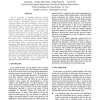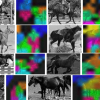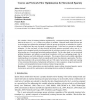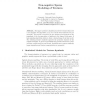112 search results - page 13 / 23 » An EM Algorithm to Learn Sequences in the Wavelet Domain |
FGR
2004
IEEE
13 years 11 months ago
2004
IEEE
Due to variations of lighting conditions, camera hardware settings, and the range of skin coloration among human beings, a pre-defined skin-color model cannot accurately capture t...
AAAI
2011
12 years 7 months ago
2011
Coarse-to-fine approaches use sequences of increasingly fine approximations to control the complexity of inference and learning. These techniques are often used in NLP and visio...
CVPR
2010
IEEE
14 years 3 months ago
2010
IEEE
Object recognition is challenging due to high intra-class
variability caused, e.g., by articulation, viewpoint changes,
and partial occlusion. Successful methods need to strike a...
CORR
2011
Springer
13 years 2 months ago
2011
Springer
We consider a class of learning problems regularized by a structured sparsity-inducing norm defined as the sum of 2- or ∞-norms over groups of variables. Whereas much effort ha...
SCALESPACE
2007
Springer
14 years 1 months ago
2007
Springer
This paper presents a statistical model for textures that uses a non-negative decomposition on a set of local atoms learned from an exemplar. This model is described by the varianc...




